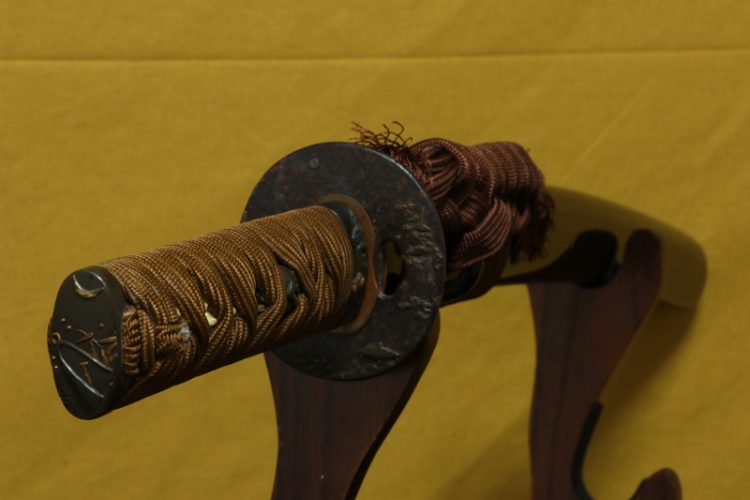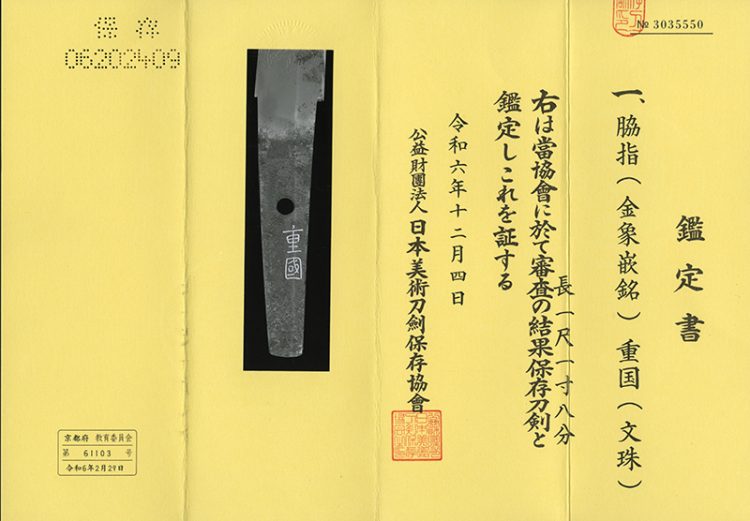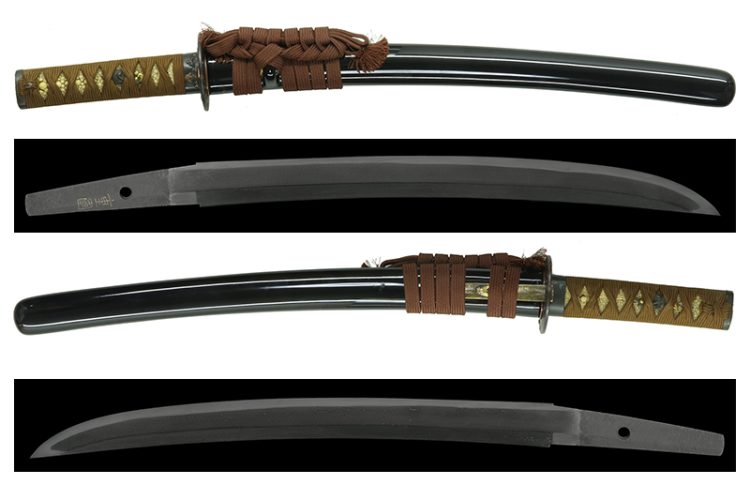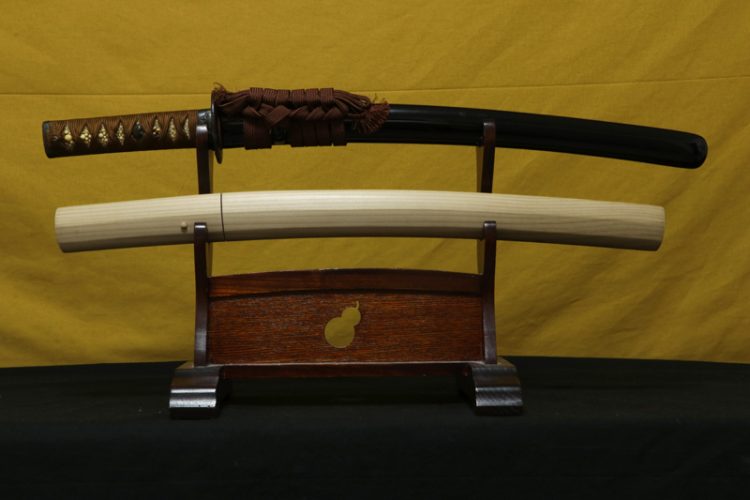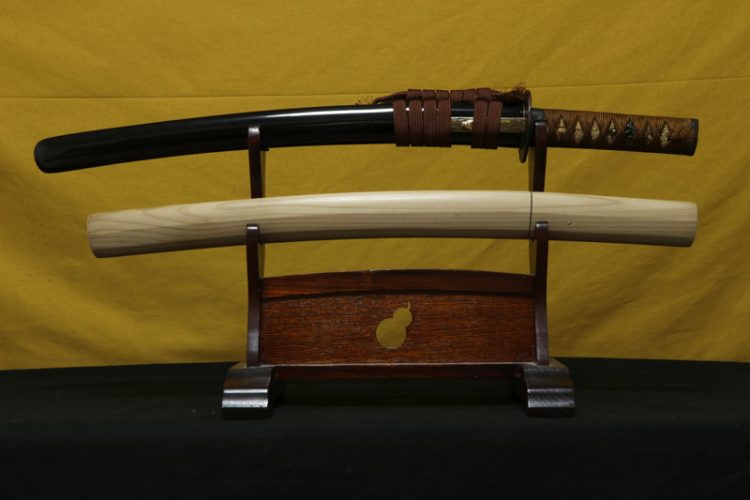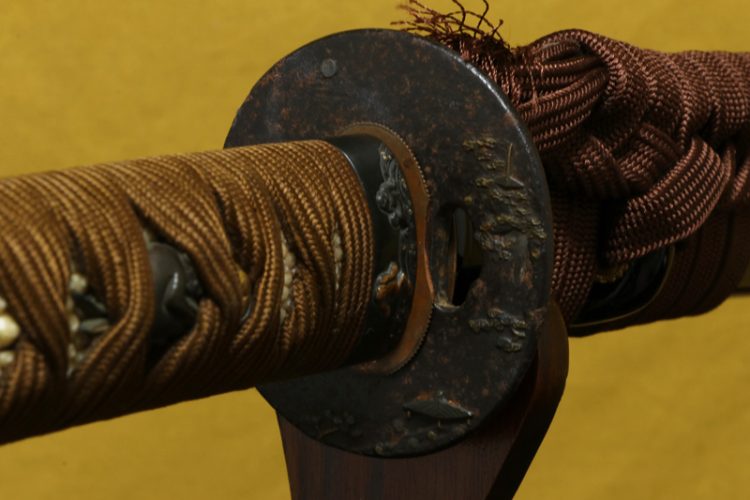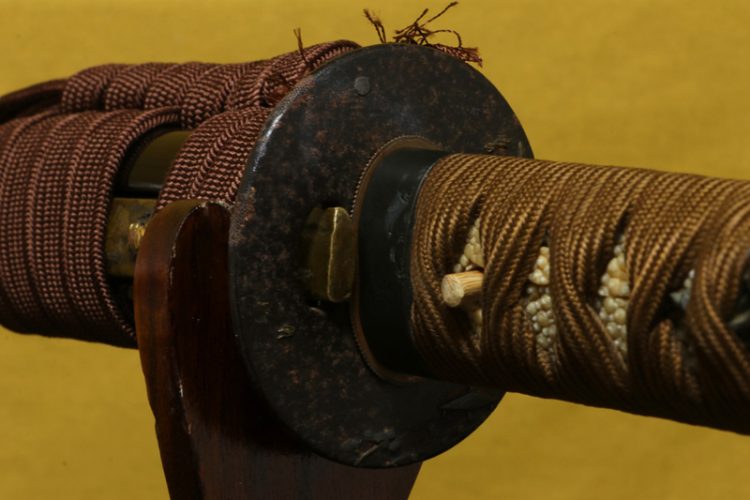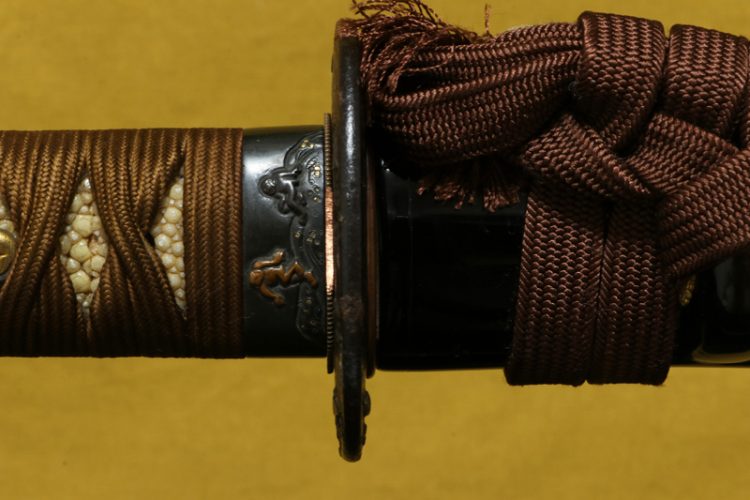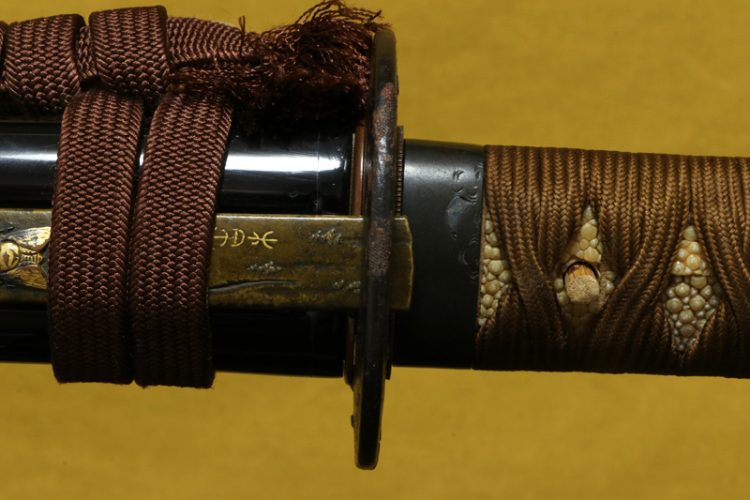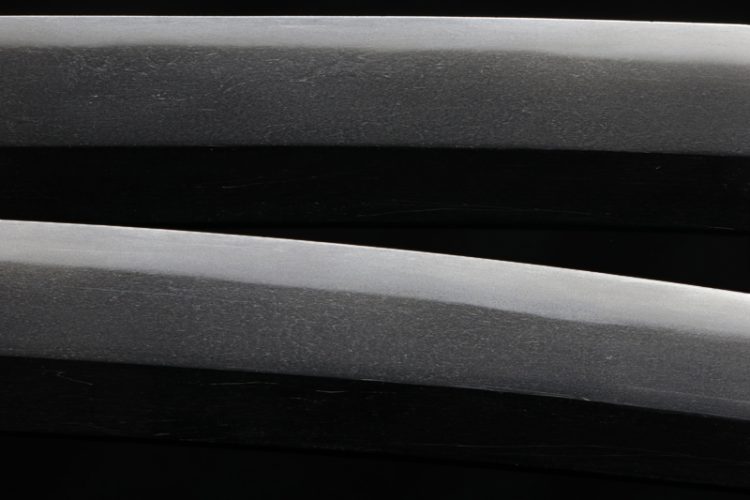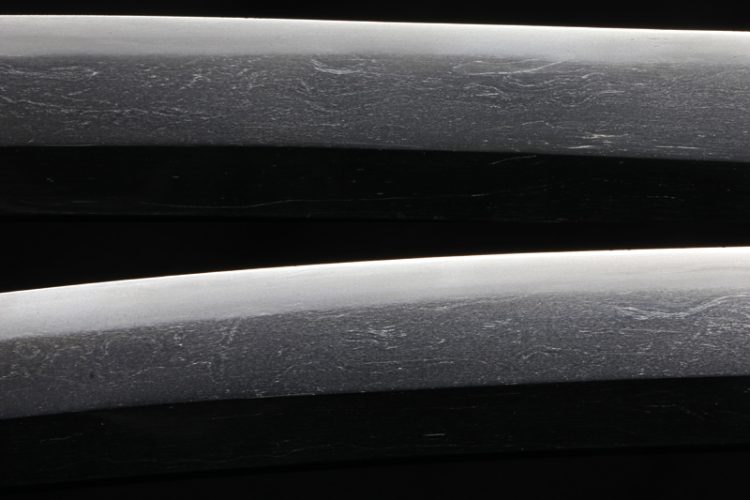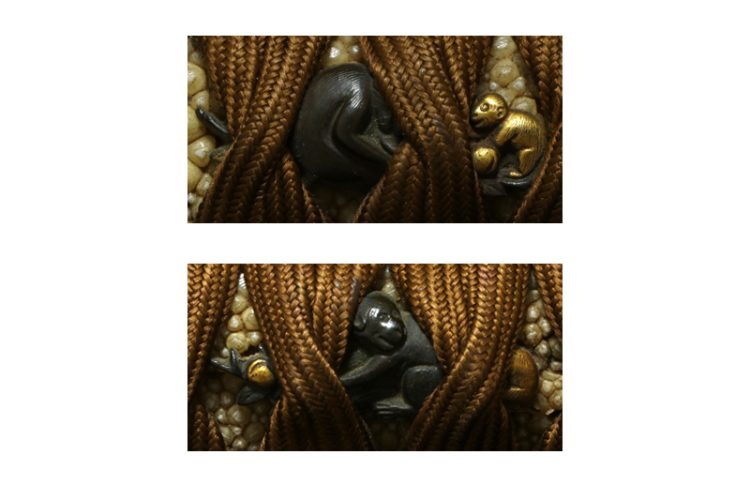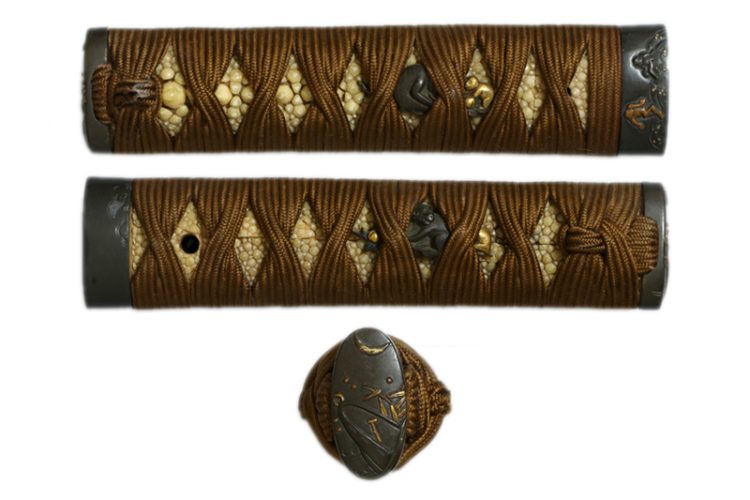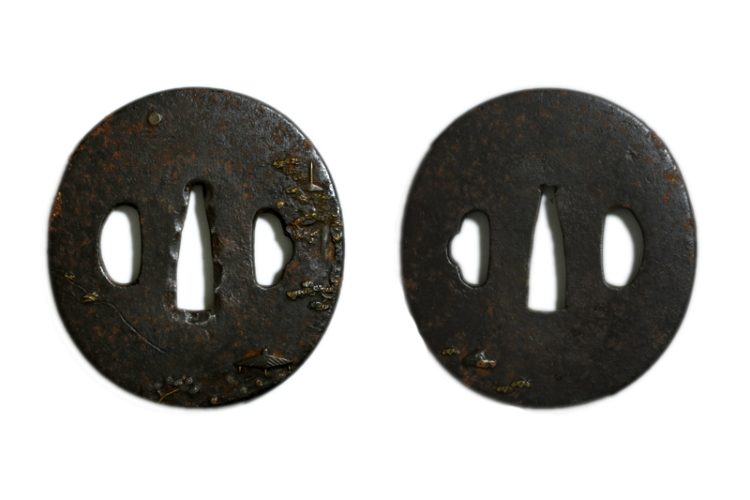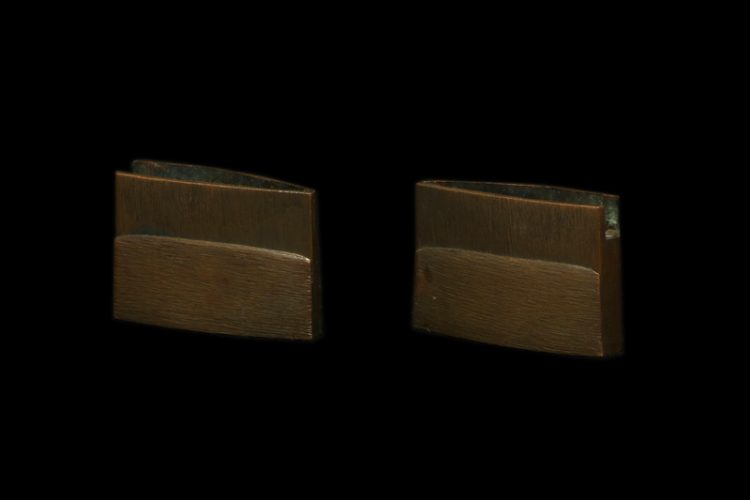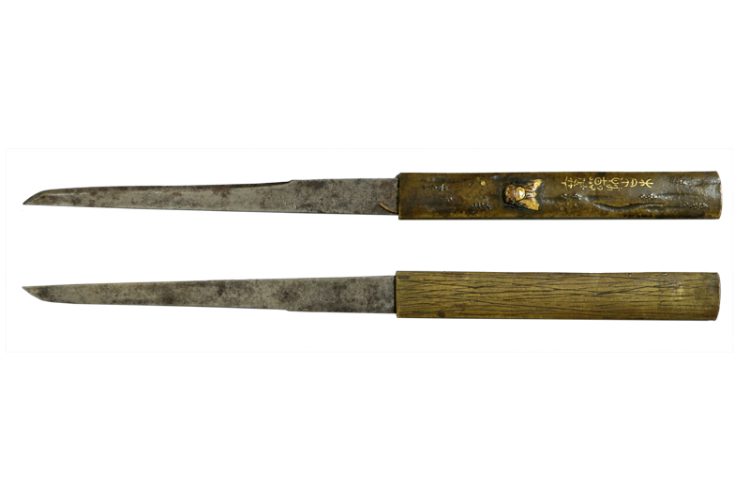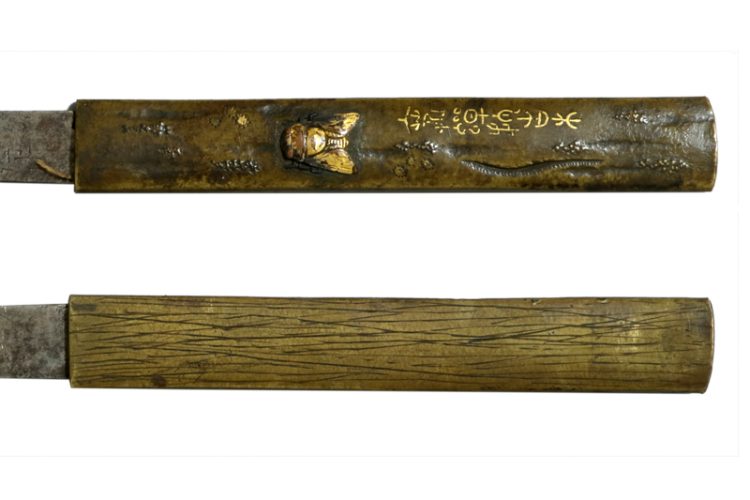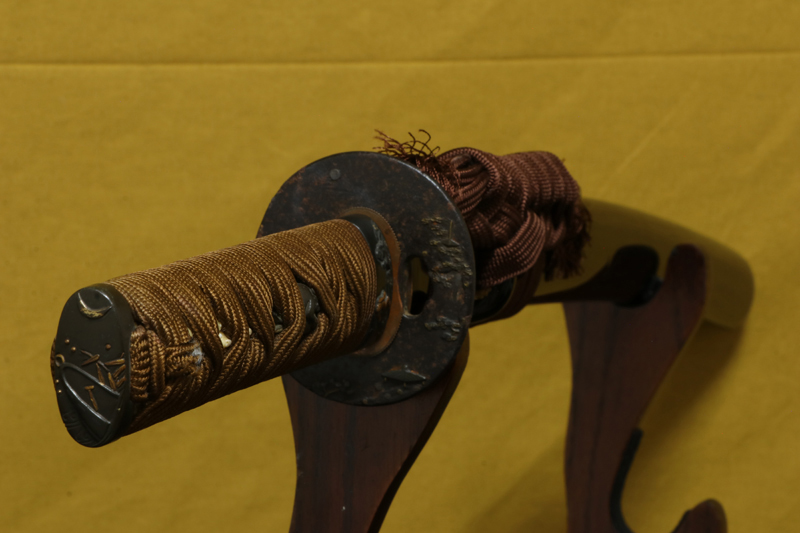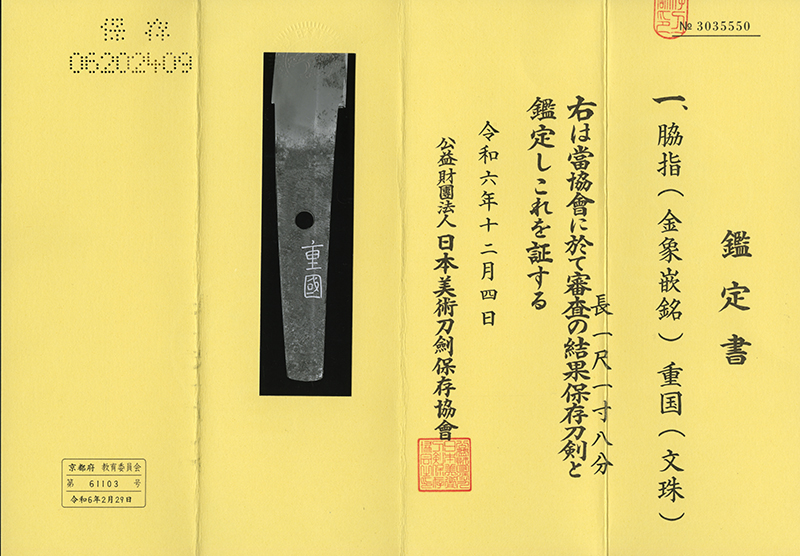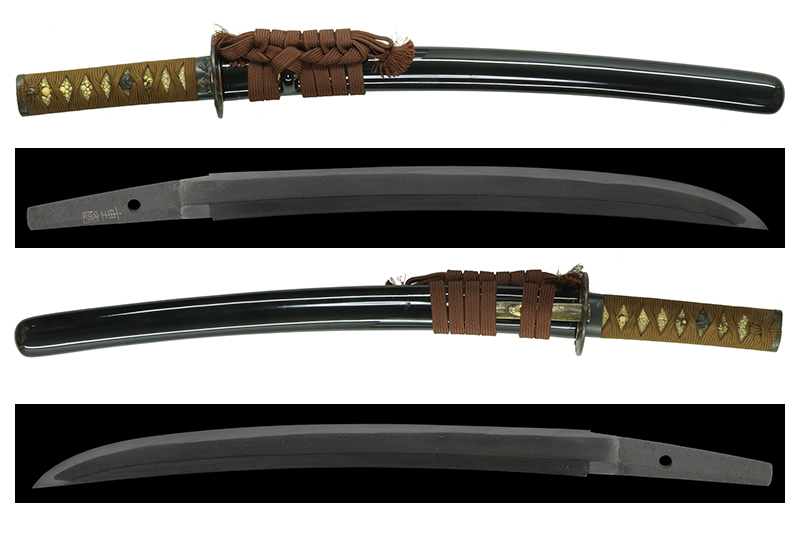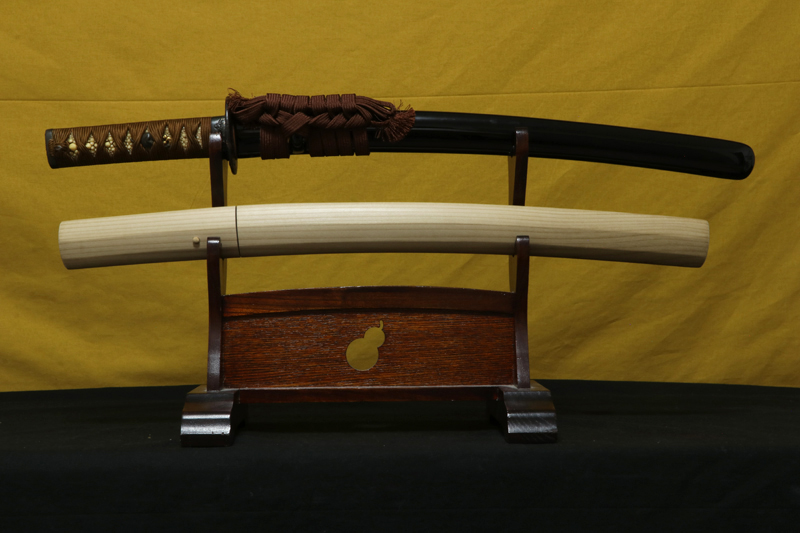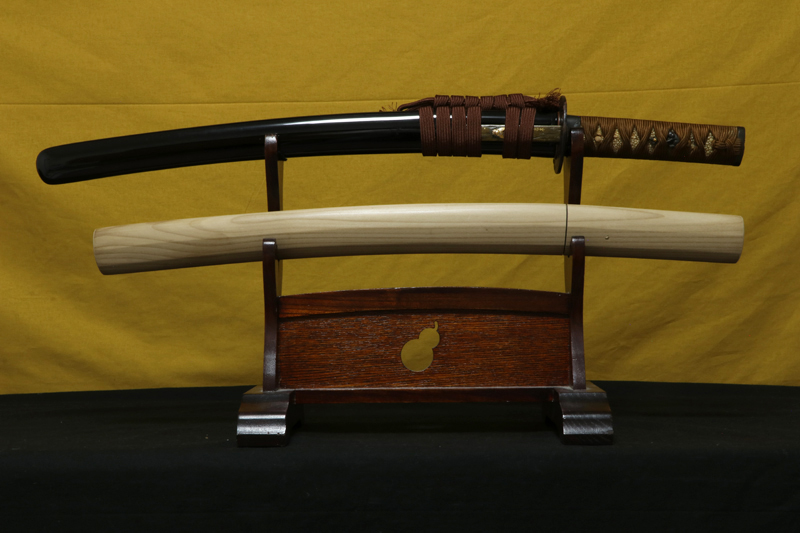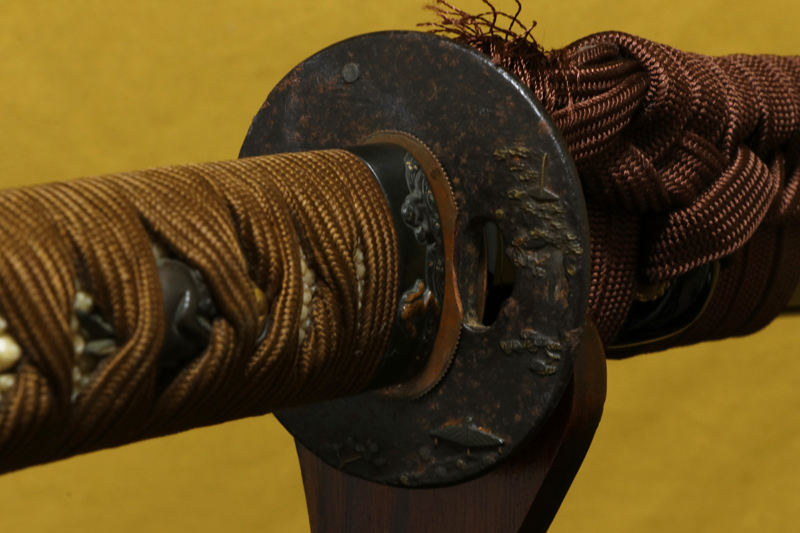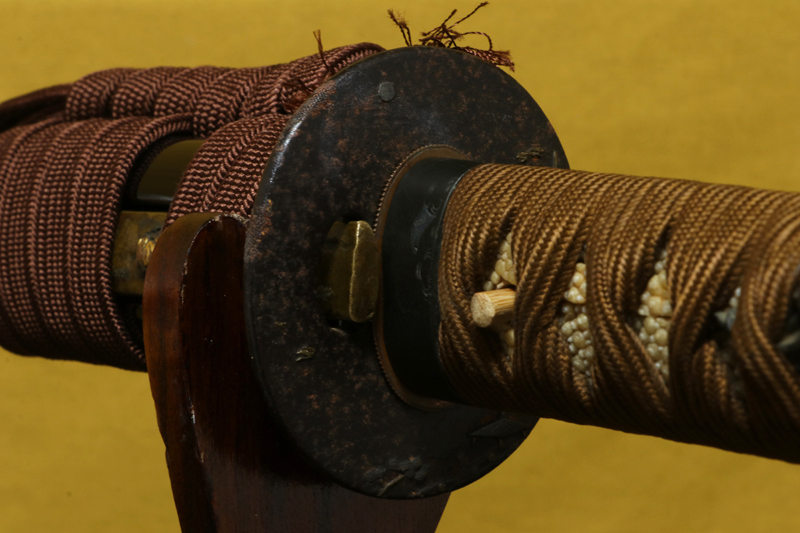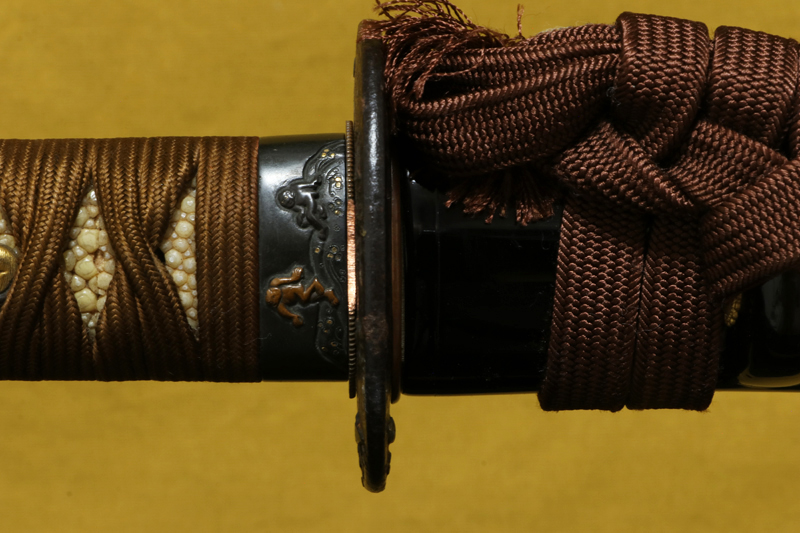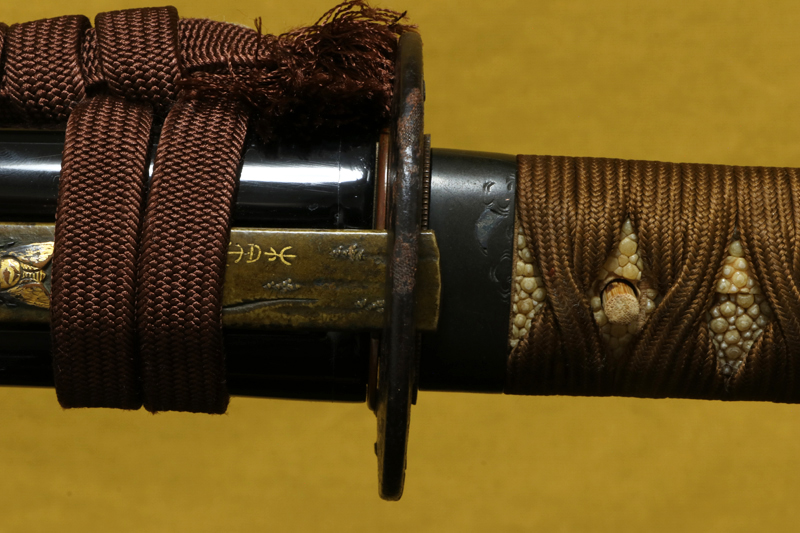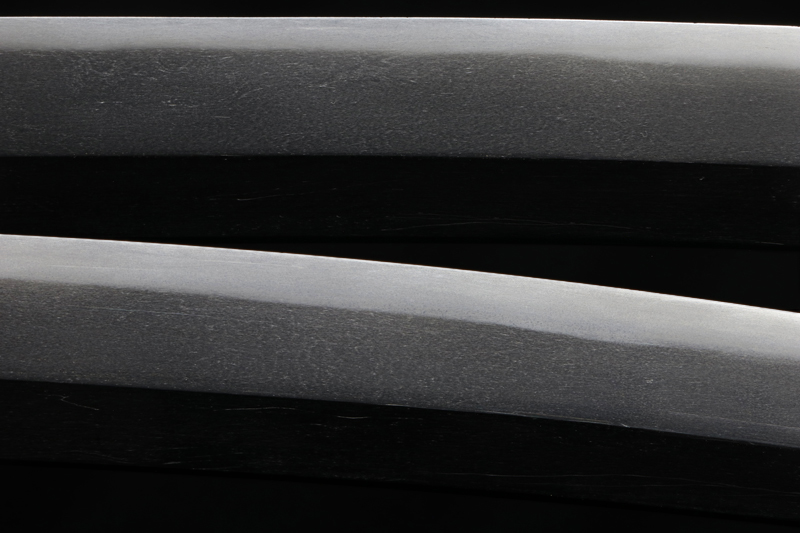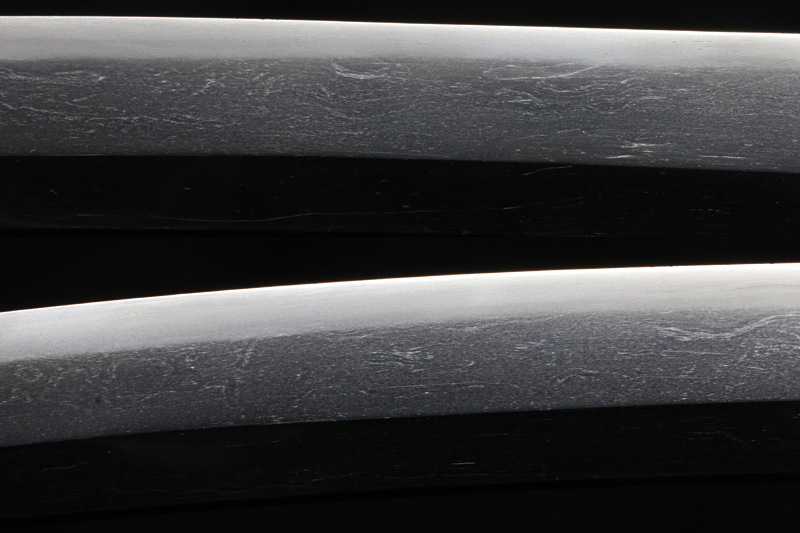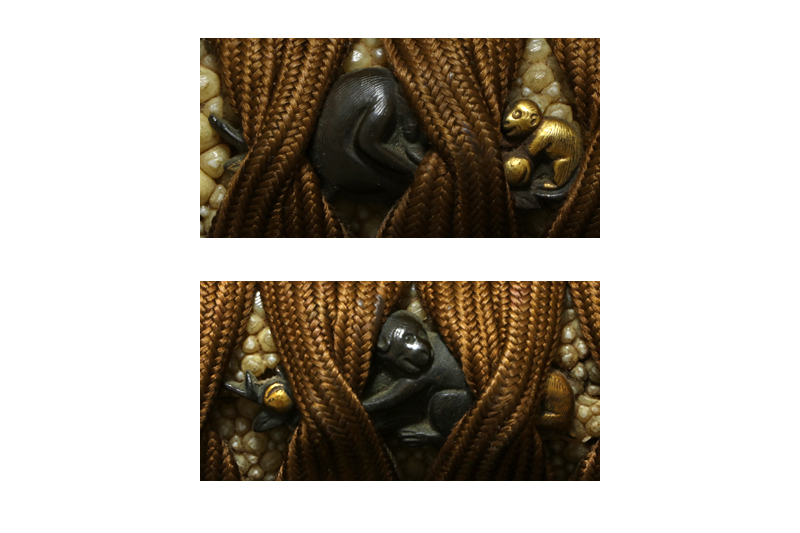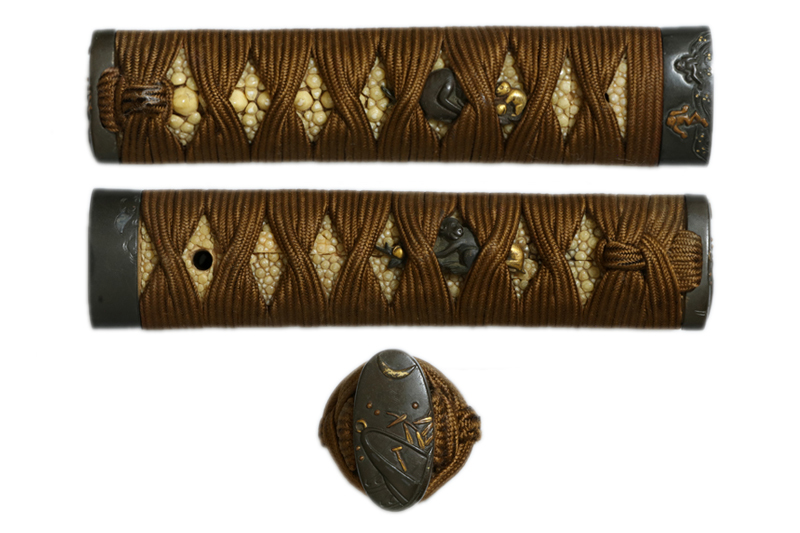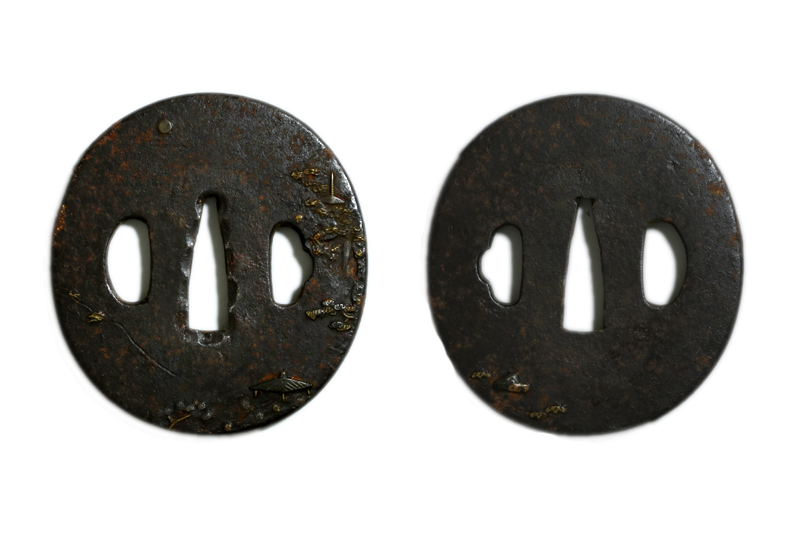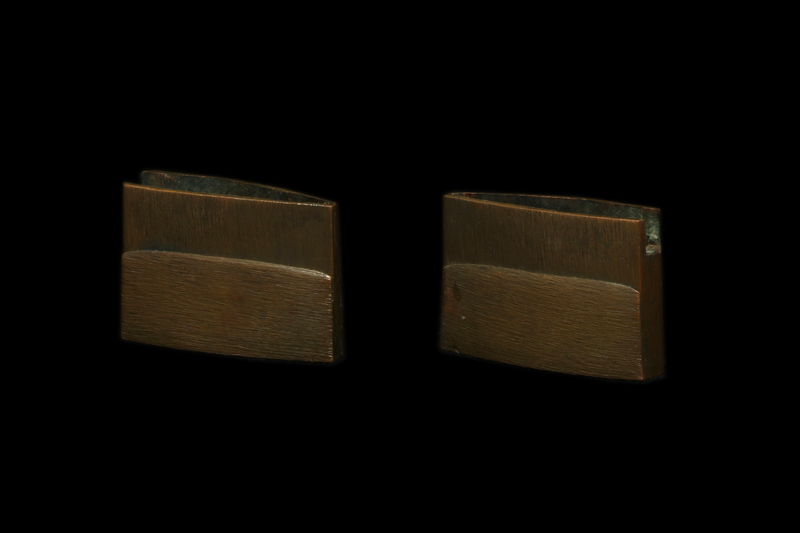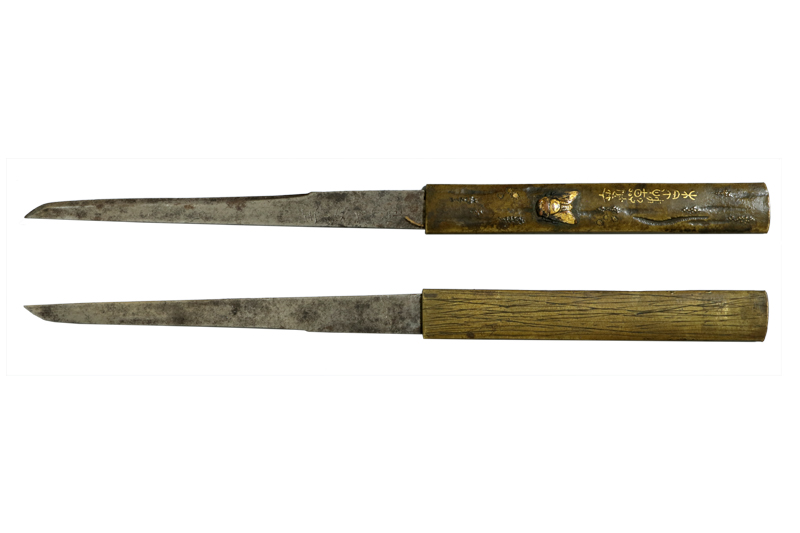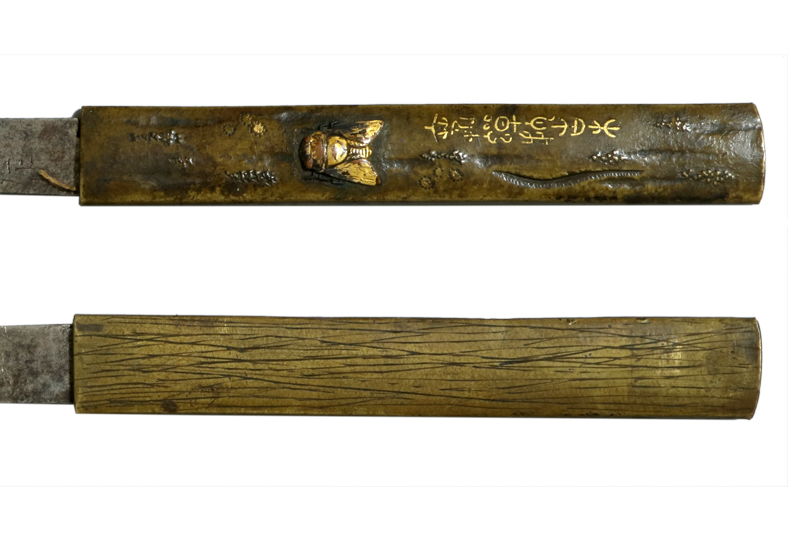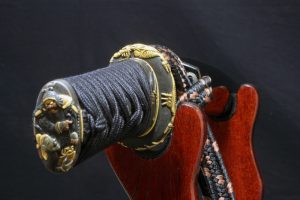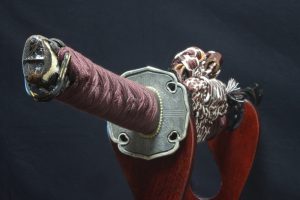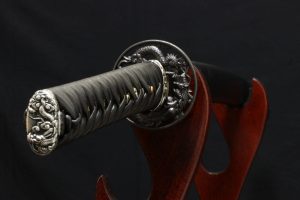説明
「刀姿 sword figure」
菖蒲造り庵棟、身幅重尋常、鳥居反り中鋒。茎は生で筋違い鑢がかかる、茎尻は栗尻。
「地鉄 jigane」
地鉄は板目肌に杢がまじり、肌が流れて柾がかり、地沸付く。
「刃紋 hamon」
刃紋は小沸出来の中直刃でやや湾れ、小互の目が交じり、刃縁砂流しかかり、刃中は金筋、葉が入る。釯子は直で入り履き掛け、尖りこころに小丸に返る。
「特徴 detailed」
南紀重國、初名は文珠四郎、後に九郎三郎重國と名乗り、紀州藩の公式刀匠として知られています。彼は大和国の手掻派刀工、文珠四郎重次の子孫と伝えられています。重國は徳川家康の招きにより駿府に赴き、家康の死後は家康の十男・徳川頼宣に仕えることとなりました。元和5年(1619年)、頼宣が紀州に移封されると、重國も和歌山に移住しました。
南紀重國の作品には、相州の名工に倣った乱れ刃の作品と、祖先の伝統を引き継ぐ大和伝の直刃の作品があります。また、日光東照宮に所蔵されている南紀重國の刀は国宝に指定されており、彼は江戸時代初期を代表する刀匠の一人とされています。
本作は無銘の脇差に「重國」と金象嵌されていますが、日本美術刀剣保存協会では「文珠」とされています。しかし刀身は元より茎の形・大きな目釘穴等、初代南紀重國に間違い無い脇差です、多分は日本美術刀剣保存協会「重國」の金象嵌が気にいら無いのでしょう。ちなみに二代重國以降は茎の形が全然違います。
刀身の・拵のコンディションは良く、分かる人には分かる素晴らしい作品です。
Nanki Shigekuni, originally named Monju Shiro, later took the name Kurosaburo Shigekuni and is known as the official swordsmith of the Kishu domain. He is said to have been a descendant of Monju Shiro Shigetsugu of the Tegai school in Yamato Province. Shigekuni was invited by Tokugawa Ieyasu to Sunpu, and after Ieyasu’s death, he served Ieyasu’s tenth son, Tokugawa Yorinobu. In 1619 (Genna 5), when Yorinobu was transferred to Kishu, Shigekuni also moved to Wakayama.
The works of Nanki Shigekuni include flamboyant midareba inspired by the great smiths of the Soshū tradition, as well as suguha in the Yamato tradition handed down from his ancestors. A sword by Nanki Shigekuni preserved at the Nikko Toshogu Shrine is designated a National Treasure, and he is regarded as one of the foremost swordsmiths of the early Edo period.
This piece is a wakizashi that is unsigned but bears a gold-inlaid inscription “Shigekuni.” However, the NBTHK (Society for the Preservation of the Japanese Art Sword) has attributed it to “Monju.” Nonetheless, judging from the blade itself, the shape of the tang, the large mekugi-ana, and other features, it is unmistakably the work of the first-generation Nanki Shigekuni. It seems likely that the NBTHK disapproved of the gold-inlaid “Shigekuni” inscription. Incidentally, from the second generation onward, the shape of the tang is entirely different.
Both the blade and the koshirae are in good condition, and it is a splendid piece that true connoisseurs will recognize.
「拵 Koshirae」
縁頭と目貫は赤銅地猿の図で、大変珍しい物です。
The fuchi-kashira and menuki feature a design of monkeys in shakudo, which is extremely rare.
ハバキ(habaki) :素銅地二重。
鍔(tsuba) :鉄地丸型東屋の図。
縁頭(futikasira):赤銅磨地猿の図。
目貫(menuki) :赤銅地猿の図。
柄(tsuka) :鮫革は親粒が付き巻鮫、柄巻は正絹金茶色の諸撮巻。
小柄(kotsuka) : 小柄袋は素銅地色揚の蝉の図。
鞘(saya) :黒呂。
「刀剣の状態 condition of blade」
研:良好です。
傷:欠点に成るような傷は有りません。
